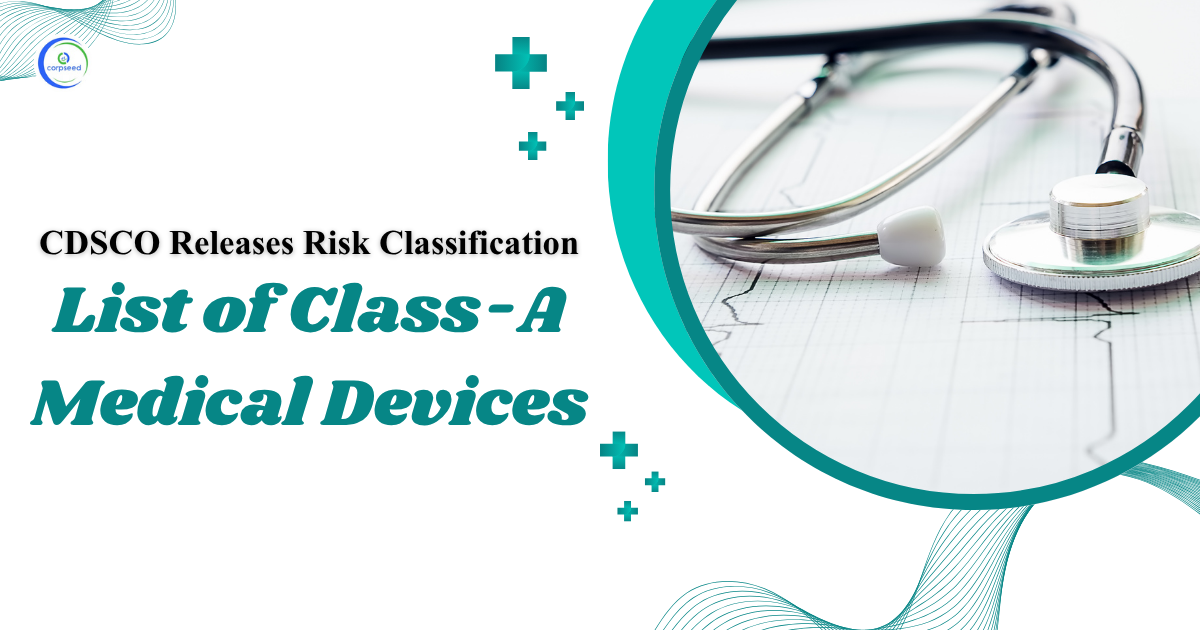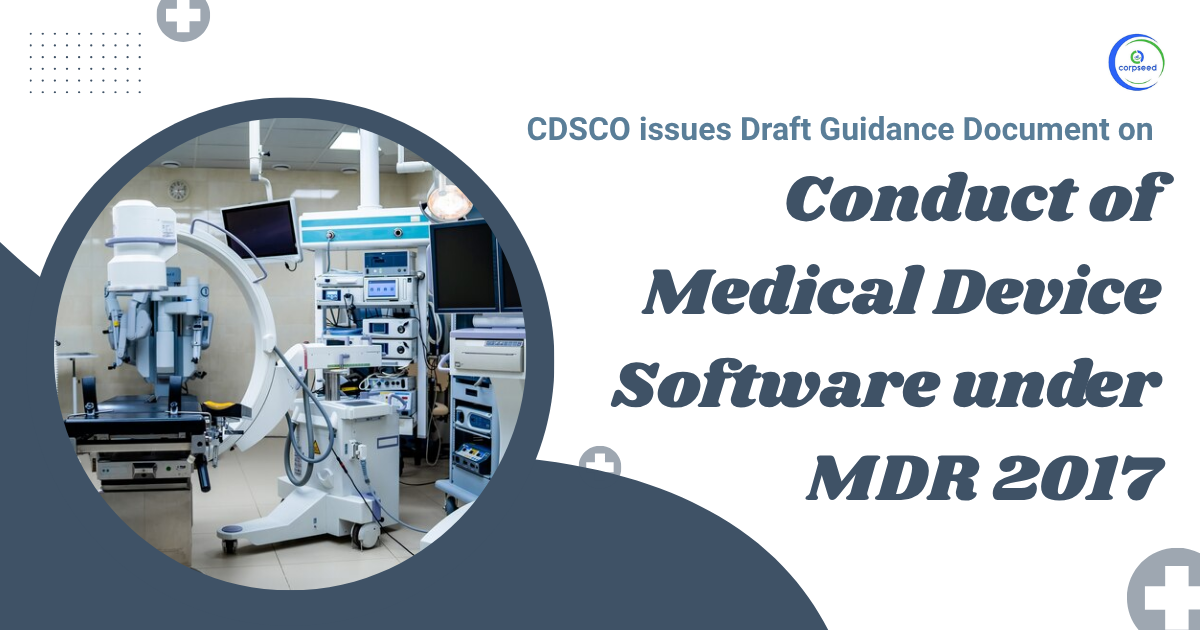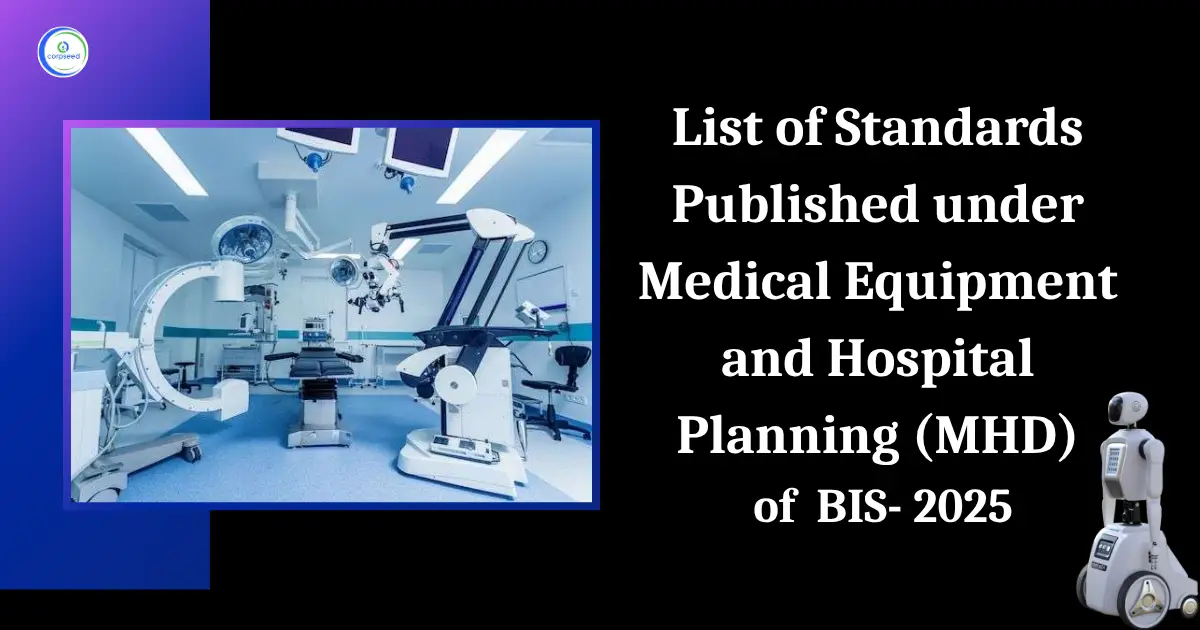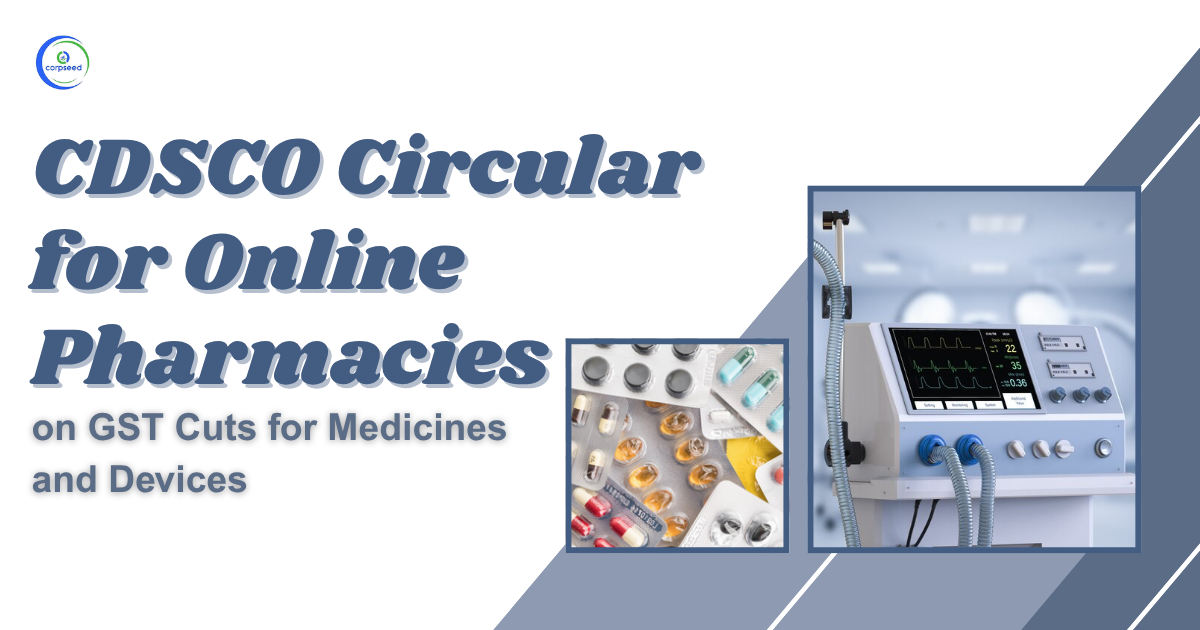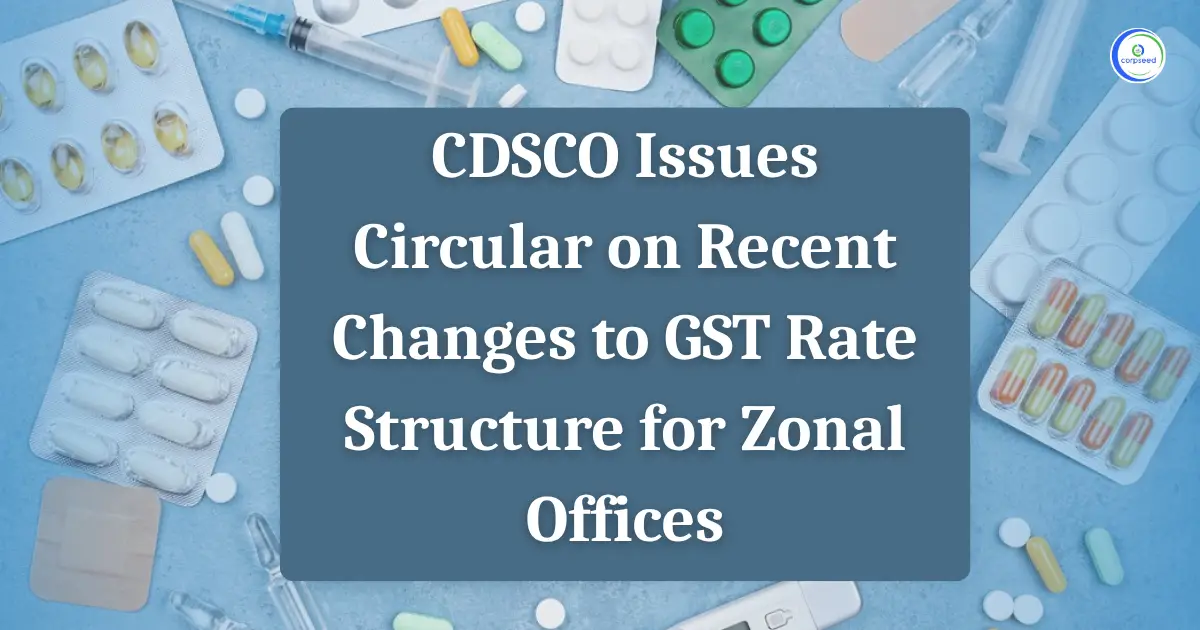A Brief Introduction of Neurology
The branch of medicine which includes the study and treatment of disorders of the nervous system. The complex, sophisticated system which regulates and coordinate body activities is called the nervous system. Neurology can be divided into two parts:
- Central nervous system which includes the Brain and Spinal cord.
- Peripheral nervous system which includes all neural elements like Eyes, Ears, Skin, and other “sensory receptors”
Table of Contents
- A Brief Introduction of Neurology
- What is a Medical Device?
- Types of Medical Devices in India
- Eligibility Criteria for Medical Devices Registration/Import
- Process & Fee for Medical Devices Registration
- Documents required to be attached
- Time Involved & Validity for Registration
- Re-registration or Renewal of the Registration Certificate
- Post-Compliances after Receiving Registration
- How To Register Any New /Additional Medical Device If Medical Device Registration Obtained Already?
--------------Blog Contact Form-------------
A neurologist is a medical professional who treats and manages brain and nervous system problems (brain, spinal cord and nerves). A neurologist is knowledgeable about the structure, operation, and diseases that affect your nerves and nervous system. The control centre of your body is your neurological system. Everything you think, feel, and do is under its control, including how you move your arm and how fast your heart beats.
From 1st of October 2022, the said medical devices having risk class A and B will be covered under the licensing regime of CDSCO. Once the devices are under the scope of licensing regime of CDSCO, all the importers and manufacturers of the said devices will have to apply for the license in order to sell their products in Indian Market.
The Neurology category consist of total 52 medical devices which are classified on the basis of their risk class and intended use. Out of which only class A and class B medical devices will fall under the licensing regime from 1 October 2022. The CDSCO listed medical devices are as below mentioned
| Neurological Medical Devices | |||
| S. No. | Device Name | Intended Use | Current CDSCO Classification |
| 1 | Analgesic PENS system | Intended to deliver controlled electrical impulses directly to the subcutaneous tissue (i.e., invasively) in the vicinity of a peripheral nerve as relief of chronic neuropathic pain. | B |
| 2 | Analgesic TENS system | Intended to treat pain by transcutaneous electrical simulation on peripheral nerves. | B |
| 3 | Analytical non-scalp cutaneous electrode | Electrical conductor designed to be attached to the skin surface of a patient outside of the hair line (i.e., non-scalp) to conduct electrical signals to a parent device for electrophysiological recording/monitoring. | A |
| 4 | Analytical non-scalp cutaneous lead | Intended to conduct electrical signals between a skin electrode(s) or needle electrode(s) [electrode not included] and a device designed for electrophysiological recording/monitoring [e.g., electromyography (EMG), evoked potentials (EP), bioelectrical impedance]. | A |
| 5 | Analytical scalp electrode | Intended to be attached to the scalp surface of a patient to transmit changes in the electrical potential of various areas of the brain for recording/monitoring by a connected parent device [i.e., an electroencephalograph (EEG), sleep, or evoked potential recording device]. | B |
| 6 | Analytical scalp lead | Intended to connect an electroencephalographic electrode(s) to an electroencephalographic system to facilitate the transmission of the electrical signals during encephalography (EEG). | B |
| 7 | Arthritis TENS system | Intended in reducing the level of pain and stiffness associated with rheumatoid arthritis or osteoarthritis by electrically stimulating peripheral nerves across the skin (transcutaneously). | B |
| 8 | Back/leg/chest dynamometer | Intended to assess neuromuscular function by measuring the force or power exerted by the back, chest, and/or leg muscles during flexion. | A |
| 9 | Cranial bur, | Intended to fit into an appropriate powered handpiece that provides the rotation allowing the user to excavate soft or hard skull tissue. | A |
| 10 | Cranial perforator | Metallic rotary endpiece designed to cut a hole(s) or a circular section(s) of the skull vault (calvarium) by attaching to powered drill/handpiece. | B |
| 11 | Cranial trephine, | Intende as a neurosurgical blade used to cut/remove circular sections of the skull vault (calvarium) to provide access to the interior | A |
| 12 | Diagnostic somatosensory tactile stimulation system | Intended to be used to apply tactile stimuli to the body (e.g., pneumatic activation of a membrane to the fingers and lips) typically for evoked response procedures to investigate the function and potential disorders of the brain. | B |
| 13 | Electroencephalogram (EEG) signal spectrum analyzer. | An electroencephalogram (EEG) signal spectrum analyzer is a device used to display the frequency content or power spectral density of the electroencephalogram (EEG) signal | B |
| 14 | Electroencephalograph electrode/lead tester. | An electroencephalograph electrode/lead tester is a device used for testing the impedance (resistance to alternating current) of the electrode and lead system of an electroencephalograph to assure that an adequate contact is made between the electrode and the skin | B |
| 15 | Electroencephalograph test signal generator. | An electroencephalograph test signal generator is a device used to test or calibrate an electroencephalograph | B |
| 16 | Electroencephalograph tester | Intended to perform quality control procedures on an electroencephalograph (EEG) machine and/or a sleep recording machine. | A |
| 17 | Electroencephalographic electrode cap | Analytical scalp electrodes preconfigured within a head-worn device to use with electroencephalography (EEG). | B |
| 18 | Electroencephalographic long- term ambulatory recorder | Intended to continuously record electroencephalographic signals in ambulatory patients for periods usually from 24 to 72 hours to assess a variety of neurological conditions (e.g., epilepsy) and psychiatric disorders. | B |
| 19 | Electroencephalographic simulator | Intended to produces artificial physiological signals or replays digitally recorded patient data to perform rapid testing, simulating that of an electroencephalograph (EEG) recorder or monitor. | B |
| 20 | Electromyograph | Intended in clinical diagnosis of muscular disorders to evaluate muscle weakness and to determine if the weakness is related to the muscles themselves or a problem with the nerves that supply the muscles. | B |
| 21 | Electronystagmograph | Intended for detecting the electrical potential caused by eye movements. | B |
| 22 | Esthesiometer. | An esthesiometer is a mechanical device which usually consists of a single rod or fiber which is held in the fingers of the physician or other examiner and which is used to determine whether a patient has tactile sensitivity | A |
| 23 | Facial nerve locating system | Intended to locate a facial nerve by applying an electrical stimulus. | B |
| 24 | Gait-enhancement electrical stimulation system, external | Intended to improve the gait in a patient suffering from partial paralysis of the lower extremities or other neuromuscular disorders by applying external electrical simulation. | B |
| 25 | Gustometer | Intended to measure the threshold of a patient's taste by applying a variable direct current to the tongue. | B |
| 26 | Hand dynamometer/pinchmeter, electronic | A electronically powered instrument intended to assess neuromuscular function by measuring the force or power exerted by the muscles of the hand/forearm to squeeze/pinch an object and as part of interactive rehabilitation. | A |
| 27 | Hand dynamometer/pinchmeter, mechanical | A mechanical instrument intended to assess neuromuscular function by measuring the force or power exerted by the muscles of the hand/forearm to squeeze/pinch an object and as part of interactive rehabilitation. | A |
| 28 | Interferential electrical stimulation system | Intended to relieve/manage intractable pain; some include additional electrodes to provide other types of electrical stimuli or suction for therapeutic massage. | B |
| 29 | Leukotome | Intended to cut brain tissue (i.e., cutting white matter, leukotomy). | B |
| 30 | Magnetoencephalography system | Intended to non-invasively detect, measure, and display bio-magnetic signals produced by electrically-active cortical brain tissue, and that provide diagnostic information about the location of the active tissue responsible for cognitive brain functions relative to the surrounding brain anatomy | B |
| 31 | Manual goniometer | Inteded to be used in a clinical setting to measure the range of motion of the limb of a patient by measuring the angle of movement achieved at the joint. | A |
| 32 | Manual surgical saw, flexible | Intended for cutting bone through a sawing action during neurological or orthopaedic surgery. | B |
| 33 | Neuromuscular transmission motion sensor | Intended to be placed on the thumb and index finger of a patient to detect movements and convert them into electrical neuromuscular transmission (NMT) signals during nerve stimulation. | B |
| 34 | Neurophysiologic monitoring system | Devices designed to monitor and provide electrical stimuli to spinal nerves or other neural pathways (may include the brain) during intraoperative surgery or intensive care. | B |
| 35 | Neurosurgical chair | Intended to support and position a patient in a sitting or reclined position during neurosurgery. | A |
| 36 | Neurosurgical head holder (skull clamp). | A neurosurgical head holder (skull clamp) is a device used to clamp the patient's skull to hold head and neck in a particular position during surgical procedures | B |
| 37 | Neurosurgical headrests. | A neurosurgical headrest is a device used to support the patient's head during a surgical procedure | A |
| 38 | Neurosurgical microscope | Designed to magnify minute structures within the neurological fields for surgery, typically the brain or spine or surroundings in the performance of neurological surgical procedures which require high magnification by transmitted light. | B |
| 39 | Neurosurgical ultrasound navigation system | Intended for intraoperative imaging of the brain for precise navigation during brain surgery (e.g., resection of malignant brain tumours, treatment of vascular malformations). | B |
| 40 | Nonpowered neurosurgical instrument. | A nonpowered neurosurgical instrument is a hand instrument or an accessory to a hand instrument used during neurosurgical procedures to cut, hold, or manipulate tissue. It includes specialized chisels, osteotomes, curettes, dissectors, elevators, forceps, gouges, hooks, surgical knives, rasps, scissors, separators, spatulas, spoons, blades, blade holders, blade breakers, probes, etc | A |
| 41 | Otoacoustic emission system | Intended to record and analyse the faint sounds hair cells in the inner ear emit in response to a stimulus (e.g., click, tone burst, pure-tone signals) to test for a deficiency of function in the ear during diagnostic evaluation and/or neonatal screening. | B |
| 42 | Percussion hammer, manual | Intended to be used by an examining physician to gently tap near a patient's joints to test reflexes. | A |
| 43 | Percussor. | A percussor is a small hammerlike device used by a physician to provide light blows to a body part. A percussor is used as a diagnostic aid during physical examinations | A |
| 44 | Physical therapy ultrasound/neuromuscular stimulation system | Designed to produce a rhythmic contraction/release of injured muscles to promote the removal of metabolic by-products while applying ultrasound treatments. | B |
| 45 | Pinwheel. | A pinwheel is a device with sharp points on a rotating wheel used for testing pain sensation | A |
| 46 | Pressure algometer/aesthesiometer, electronic | Intended to measure the sensitivity to pain. | A |
| 47 | Skull plate anvil. | A skull plate anvil is a device used to form alterable skull plates in the proper shape to fit the curvature of a patient's skull | A |
| 48 | Skull punch. | A skull punch is a device used to punch holes through a patient's skull to allow fixation of cranioplasty plates or bone flaps by wire or other means | A |
| 49 | Skullplate screwdriver. | A skullplate screwdriver is a tool used by the surgeon to fasten cranioplasty plates or skullplates to a patient's skull by screws | A |
| 50 | Transcranial electrical stimulation system, continuous- current and pulsed-current |
Intended for one or more psychiatric\neurological therapy types [e.g., transcranial direct current stimulation (tdcs), transcranial alternating current stimulation (tacs)]. And to induce a state resembling that of chemically-induced anaesthesia for treating one or more psychiatric disorders which may include anxiety, depression, insomnia, and/or addiction. |
B |
| 51 | Tuning fork | Intended to test the hearing acuity of a patient, to diagnose hearing disorders, and to test for vibratory sense. | A |
| 52 | Ultrasonic scanner calibration test block. | An ultrasonic scanner calibration test block is a block of material with known properties used to calibrate ultrasonic scanning devices (e.g., the echoencephalograph) | A |
Central Drugs Standard Control Organisation:
India is growing as one of the nation's leading in pharmaceutical business and is among the top ten nations in terms of the pharmaceutical industry. Several factors such as large population, growing health awareness, affordable medical facilities, and better research facilities have given rise to the manufacturing and development of pharma business in India. However, with the increasing scope for the growth of the pharma industry in India, there are possibilities for the sale/purchase of medical equipment & device illegally or without jurisdiction. Therefore, the Government of India has established the Central Drug Standards Control Organization (CDSCO), which is the primary legislative body and has been responsible for the regulation, control, and management of pharmaceuticals and medical devices in India apart from the appointment of the Drug Controller General of India (DCGI), and has conferred the responsibility of undertaking assessment, approval and regulation of further compliances(import, export, sale, distribution) in the matters of medicinal drugs and medical devices(including any existing or any new) drugs/devices in accordance with the provisions of the Drugs and Cosmetics Act 1940.

What is a Medical Device?
According to the latest definition as provided under the Medical Devices Amendment rules 2020, as notified on 11.02.2020. However, taking care of circumstances the government has exercised its powers to include more categories by widening the scope of the definition of “Medical Device” under the Act. It states-
"Devices used in general medical practice such as medical apparatus, instruments, implants appliance, etc., which are either used individually or in combination, and are intended to be specifically applied for human beings or animals and are further intended to obtain the desired function by such means and for such purposes as provided below, but is not intended to meet the primary intended action on human body or animals by any pharmacological or immunological or metabolic means-
- Analysis, prevention, observing, treatment, or mitigation of any disease or disorder;
- Analysis, observing, treatment, mitigation, or support for any injury or disability;
- Examination, replacement or alteration or support in findings of the anatomy or a physiological process;
- For supporting or sustaining life;
- Decontamination of medical devices; and
- Conception related equipment’s & devices.
Therefore, every manufacturer or importer or both of any medical devices in India shall be required to obtain registration as per the provisions of the Drugs and Cosmetics Act 1940. Any failure to comply with the same may invite legal action including penalty & prosecution under the Act.
Types of Medical Devices in India
Provisions related to the import, manufacture, sale & distribution of medical devices are regulated under the provisions of the drug and cosmetics Act 1945. Under the New Medical Rules 2017, all medical devices have been classified into four different categories depending on their usability & risk involved as provided below.
- Class A:- Low-risk devices like a thermometer, tongue depressors, etc.
- Class B:- Low moderate risk like Hypodermic Needles, suction equipment, etc.
- Class C:- Moderate high-risk devices like Lung ventilator, etc.
- Class D:- High-risk devices like Heart valves, implantable devices, etc.
Where Class A & B devices are considered to be less risky and moderate devices, for which the application to manufacture has to be filed to the State Licensing Authority. Whereas Class C &D are considered to be high and very High-risk devices and the application for these has to be filed to the Central Licensing Authority of India.
Eligibility Criteria for Medical Devices Registration/Import
The provisions related to activities such as Import, manufacture, sale, and distribution of medical devices have been regulated under the provisions of the Drugs & Cosmetic Act 1940 & Rules 1945. Therefore, any person/firm/enterprise, etc. holding a wholesale drug license and/or manufacturing license issued under the Drugs and Cosmetics Act, 1940 and Rules 1945 could make an application for Registration and import of medical devices into India.
Process & Fee for Medical Devices Registration
Types of Medical Devices Registration
- Registration/Import of any existing medical device
- Registration /import of any new medical device
Step 1: Determine Whether Your Medical Device Is Under Notified List or Not
The CDSCO authority has provided a list of notified medical devices that need to compulsorily obtain registration under the Drugs and Cosmetics Act 1940 and in accordance with Medical devices rules 2017. However, there may be any medical devices that have not been expressly notified by the CDSCO authority, or in case of new medical equipment, the manufacturer/importer shall be required to obtain a NOC in such cases. For instance, Blood Grouping Sera Ligatures, Sutures, Staples Intra-Uterine Devices (Cu-T), Condoms, Tubal Rings, Surgical Dressing, Umbilical Tapes, Blood / Blood Component Bags do not need registration, whereas devices such as spinal needles, cochlear implants, syringes, and needles, heart valves, endotracheal tubes and catheters among others should undergo registration provides with the CDSCO.
Step 2: Appoint an Authorized representative (in case of Foreign Entity)
For a foreign business manufacturer entity, it shall be necessary to appoint an authorized business entity in India, who shall be the contact person for the inspection authorities during the process, assist in device approvals, and registrations process, and vigilance adverse event reporting. The Indian Authorization should hold a wholesale drug license in forms 20B& 21B.
Step 3: Fill out the applicable form for Medical device Registration
In the next step, the manufacturer/importer for MD shall be required to submit the registration form of a regulatory dossier, along with all the prescribed documents along with the prescribed fee on the CDSCO portal to the DGCI (Drugs Controller General of India) by logging on to the online CDSCO portal https://cdsco.gov.in/opencms/opencms/en/Home/ and signing into the portal.
Following forms along with applicable govt. fees have been provided below, which shall be required to be paid through payment challan-
| Applicant Type | Class of MD | Application Form | License Form |
| Importer | A,B,C,D | MD-14 | MD-15 |
| Manufacturer | A B | MD-3 | MD-5 |
| Manufacturer(Loan License) | A B | MD-4 | MD-6 |
| Manufacturer | C, D | MD-7 | MD-9 |
| Manufacturer(Loan License) | C, D | MD-8 | MD-10 |
However, in the case of new equipment or medical device-
| Application Type | Class of MD | Application Form | License Form |
| Importer Clinical Investigation | A,B,C,D | MD-22 | MD-23 |
| Import License | A,B,C,D | MD-26 | MD-27 |
| Test License(for importer) | A,B,C,D | MD-16 | MD-17 |
| Manufacturer (Clinical investigation) | A,B,C,D | MD-22 | MD-23 |
| Manufacturer License | A,B,C,D | MD-26 | MD-27 |
| Test License | A,B,C,D | MD-16 | MD-17 |
Further, each application shall be supported with the list of documents and the requisite fee as provided in the online portal of CDSCO-
| Type of License | Class of Device | Applicable Regulation | Govt. Fee |
For Manufacturing/Loan License
|
A or B; | 20(2) | Rs. 5000 Rs. 500 |
For Manufacturing/Loan License
|
C or D; | 21(2) | Rs. 50,000 Rs. 500 |
For Import License(other than IVD)
|
Class A | 34(2) | 1000 Dollar 50 Dollar |
Import License(other than IVD)
|
Class B | 34(2) | 2000 Dollar 1000 Dollar |
Import License (in IVD)
|
Class A or B | 34(2) | Rs. 1000 Rs. 10 |
Import License (other than IVD)
|
Class C or D | 34(2) | 3000 Dollar 1500 Dollar |
Import License(in IVD)
|
C or D | 34(2) | 3000 Dollar 500 Dollar |
Step 4: Obtain Certificate of Registration in Prescribed form
Once the application is submitted on the CDSCO portal, the DGCI registration authority may send a query through an inquiry letter to the manufacturer or from the authorized representative of the importer, along with the timeline within which the query should be answered and sometimes, may also ask for a technical presentation On satisfaction the authority may issue a license in such form as provided in the above list. After obtaining registration, the manufacturer or his authorized representative may apply for an importer license.
Documents required to be attached
- Form 40
- ISO 13485 certificate
- Full Quality Assurance Certificate
- CE Design Certificate
- Undertaking that all information provided is authentic
- Either a Free Sale Certificate or Certificate from the Foreign Government
- Certificate of Marketability from GHTF (Australia, Canada, Japan, the European Union, and the United States);
- Plant Master Report
- Device Master File
Time Involved & Validity for Registration
If the DGCI doesn’t ask for a Technical Presentation or Subject Expert Committee (SEC) audit, it takes around 6-9 months to obtain a Medical Devices Registration. In cases where Technical Presentation or Subject Expert Committee (SEC) audit, is required, it may take additional 3-6 months.
Once obtained the Registration Certificate shall be valid for a total period of 3 years from the date of issue of registration unless suspended or cancelled by the DGCI authority for proper causes.
Re-registration or Renewal of the Registration Certificate
The application for renewal of the MD registration certificate shall be made at least nine months from the expiry of the registration certificate. Though there are no additional requirements for the renewal of registration, it shall be necessary for the certificate holder to provide a copy of the Plant Master File (PMF) and Device Master File (DMF), where there are no changes in the PMF and DMF,
Post-Compliances after Receiving Registration
Though there are not many compliances in place about the registration certificate, it shall be compulsory for the certificate holder to-
- In case of any change that has taken place about the constitution of the firm and/or address of the registered office/factory premises, the MD manufacturer/authorized representative of the importer to intimate the licensing authority regarding the same in writing;
- In case any such change has taken place, the existing registration certificate shall be valid for a maximum period of three months from the date on which the change has taken place, and during this time, the manufacturer/authorized representative shall be required to obtain a Fresh Registration Certificate;
How To Register Any New /Additional Medical Device If Medical Device Registration Obtained Already?
In case an importer wants to obtain registration for manufacturing of any additional manufacturing device, then such person shall be required to obtain an endorsement to the existing Registration Certificate along with the prescribed documents holding that manufacturing of an additional device is being undertaken in the manufacturing site as provided in the registration certificate along with a fee of 1000 dollars fee for each additional device.
Drug License
A drug license is an official permission granted to individuals or companies that manufacture, distribute, and sell drugs in India. It ensures adherence to the safety and quality standards of the regulatory authorities that ensure public health.
Medical Devices Import/Manufacturing
CDSCO online registration is a process that ensures that all the drugs, medical devices, and cosmetics in the market are safe, reliable, and must have passed quality standards. Importers, manufacturers, and others must register under the CDSCO for a certificate if they are working in this field.
Medical Devices Import
The CDSCO is responsible for medical device registration in India. This registration guarantees that all devices are safe, of high quality, and comply with regulatory standards. This registration not only protects patients but also supports global trade.
This portion of the site is for informational purposes only. The content is not legal advice. The statements and opinions are the expression of author, not corpseed, and have not been evaluated by corpseed for accuracy, completeness, or changes in the law.
BOOK A FREE CONSULTATION
Get help from an experienced legal adviser. Schedule your consultation at a time that works for you and it's absolutely FREE.





